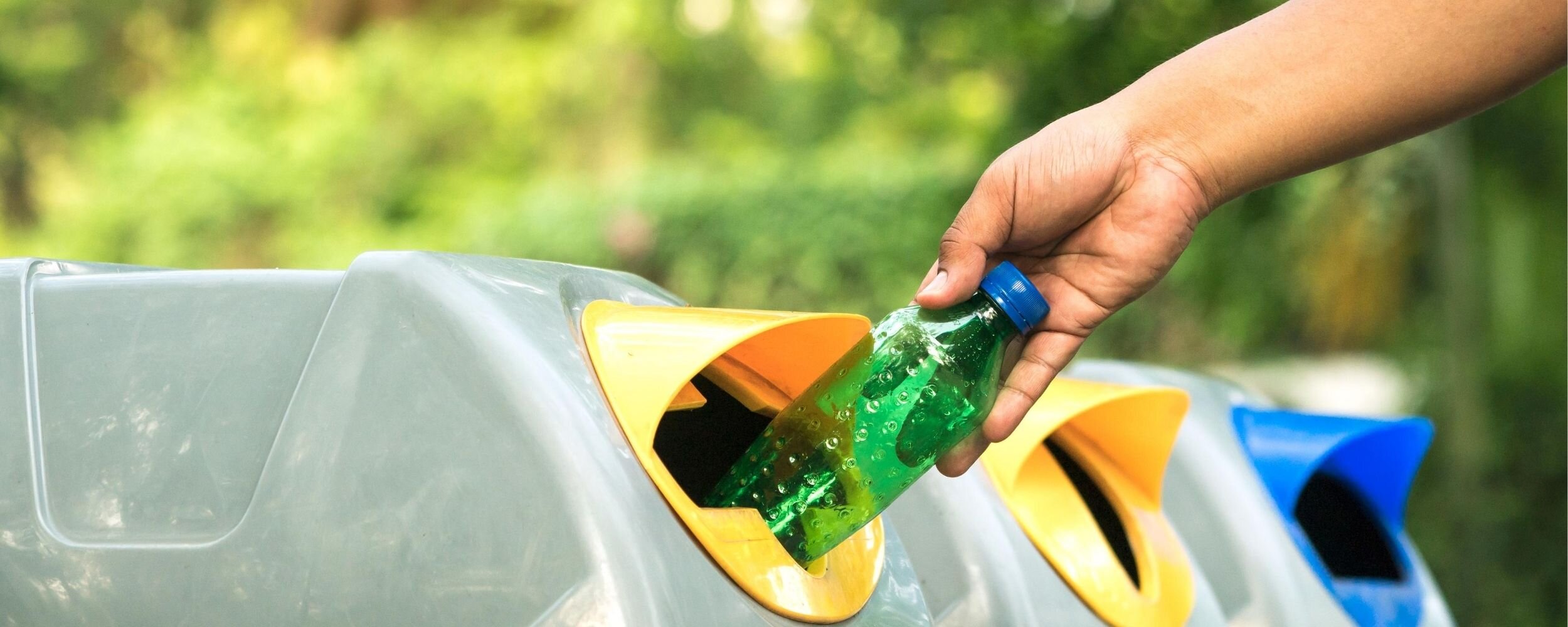How To Green Your Event
Have you ever walked up to the waste bins, see all of the options (compost, recycle, landfill), know you have a corn-based cup with a plastic straw and some fruit smoothie still left in the cup wondering where do I put this?
I call this the trashcan dilemma.
We were taught at a young age to recycle plastic, tin, glass and cardboard. Now we are learning that not every plastic can (or will) be recycled, cardboard and paper with food on it cannot be recycled, “islands” of “recyclable” plastic are floating in our oceans and so many past certainties are now wrong.
The heart of environmentally friendly practices is to reduce our carbon footprint by reducing what goes into landfill, reusing items and/or recycling once used items into something of value to be used again. To keep it familiar this is categorized by the not-so-old adage Reduce, Reuse & Recycle (next month’s blog post will discuss Offset Purchases).
How to Reduce Waste
Reduce the amount of waste going into landfills (aka Trash) or unnecessary use of energy or wasted water by doing any of the following.
Eco-Certified Venues. Choose venues that already practice a lower carbon footprint. Usually their website will list their practices and certifications. This includes water waste, energy reduction, composting, locally sourced vendors to reduce fuel costs.
Food Waste. Ask your caterer to plan a ‘No-Waste’ menu. This means utilizing all parts of the food so no food is thrown away (i.e. scraps cut from produce/meats can be used for broth or other dish).
Individually Wrapped Items. Reduce, if not remove, individually wrapped eating utensils and condiments (i.e. salt, pepper, sugar, creamer, dressings, ketchup, etc.) Serve items in bulk. Put condiments in nice glass or ceramic containers to jazz it up.
Packaging. Reduce the craziness that is packaging (hello Amazon). These days you buy eco-friendly reusable cups that are individually packaged in non-recyclable plastic. Ugh!! Request event vendors to work with their providers and bring only recyclable or compostable packaging.
Paper & Printing. Reduce your paper needs by going digital. Don’t print agendas, send it ahead of the meeting. Even better put it on a platform like Google Drive so you can enter notes in real-time during the meeting. Find ways other than printing event signs to show brand awareness. Display signs and programs digitally rather than mass printing a program.
IMPORTANT NOTE: Segregate waste into compost, recyclable and landfill (aka trash). The goal is to reduce what goes to landfill. BUT FIRST, find out what the venue/municipality can compost and recycle to base your purchasing decisions.
How to Re-Use/ Repurpose/Upcycle
The purpose of this is to reduce what goes to landfill (the ultimate goal) by re-using an object over and over again or change the item to be used for another purpose.
Borrow. Borrow items from a neighboring business, caterer or venue rather than rent/buy. This is a very budget friendly option.
Buy used Décor. Sites like Craigslist and TheKnot.com have boards with people selling or renting décor items from their events. Search locally if possible, to reduce fuel costs on transport/delivery.
Donate After Event. Donate unused furnishings to a good cause after the event. One for-profit company purchased their furnishings and then donated to Habitat for Humanity to furnish some of the homes they were renovating/building.
Share. Share décor and/or rentals with the event taking place at the same venue before or after your event. For a floral centerpiece, add in one new colorful addition it can change the whole look.
What Can be Recycled
Recycling is meant to limit the amount of items going into landfill and to change the form of your once used item into something that can be used as something else or provides benefit in another form. Below is a list of what can and cannot be recycled.
Compost. Produce food scraps & peels, coffee grounds and certain papers - these are primarily natural materials not man-made. Please note: Composting of bio-plastics takes on a different process than organic materials.
Glass. Most communities can accept all glass.
Metals. Tin, aluminum, and steel cans Please note: Aluminum foil (aka tin foil) is not recyclable if there is food residue on it, this contaminates the recycling process.
Paper. White and color office paper, cardboard, newspaper, magazines, catalogs, and for you old folk, phone books. HOWEVER, if there is food or beverage on the paper it can no longer be recycled (i.e. soy milk boxes, broth boxes, etc.).
Plastic. Many communities can accept most plastics with the recycling symbol. The numbers (1 -7) identify the resin in the material. Basically #1 & #2 are recyclable #3 - #5 you must check with the municipality to see if they can recycle. Now #6 is Polystyrene (aka Styrofoam) - DO NOT recycle, in fact DO NOT buy! Plastic #7 is a catch-all and usually not recyclable.
Day Of Event Green Tips
Staff Education/Training. The most important step to take on day of event is to educate/train the event vendors, staff or volunteers on your green goals – primarily what is compost, recyclable for the community and what is landfill - to ensure contamination is kept to a minimum. If they don’t know what to do all of your efforts will go to waste….and by that I mean goes to landfill.
Communication. Compose an email addressing the green goals and tell event staff the steps you are taking at the event. Send it to event staff, volunteers and event vendors a few days before the event, any earlier and they will completely forget - if they even look at the email.
On top of that, hold a meeting before the event starts with all event staff, volunteers and event vendors to go over your green goals and answer all of their questions. Have visuals at the meeting too, it will be helpful.
Guest Education. Just as important as it is to educate the staff the guests need to know of your efforts too. There are several green ways to inform them via event website, confirmation of purchase emails, reminder emails, signage at the event and event staff reminding them at the event.
Post Event Green Tips
Any items that still have life in them can be used elsewhere – make sure to have staff designated to deliver or hand-off to the organizations picking up.
Donate items/décor after event.
Food rescues/shelter. If they are picking up, make sure a staff member packages the food properly and stays with it until someone arrives to pick it up.
Now grab your reusable coffee cup or water canteen and plan a ‘Kelly’ green event that shows clients your company cares about the earth and the people on it!
Want more tips, inspiration and/or downloads to help you make corporate events bigger, better and A LOT more fun, subscribe to our monthly eNewsletter HERE.


